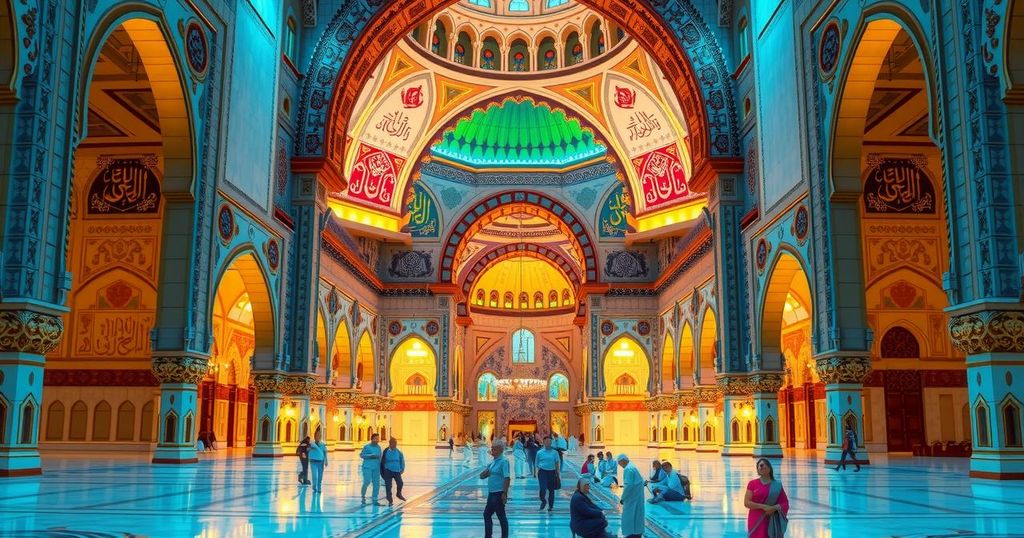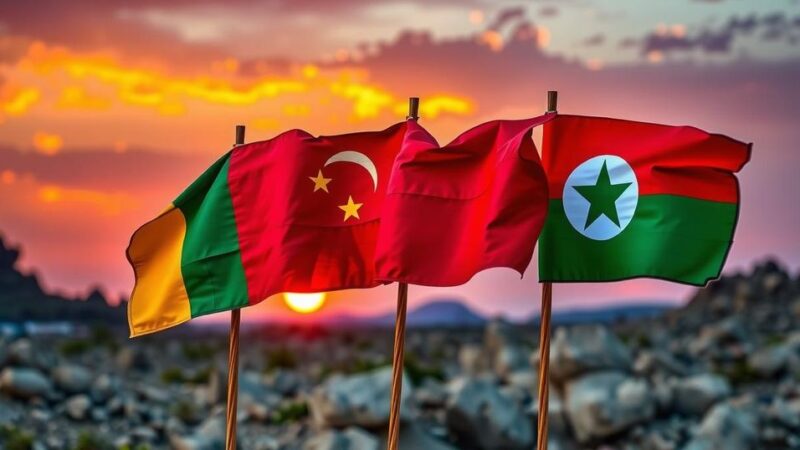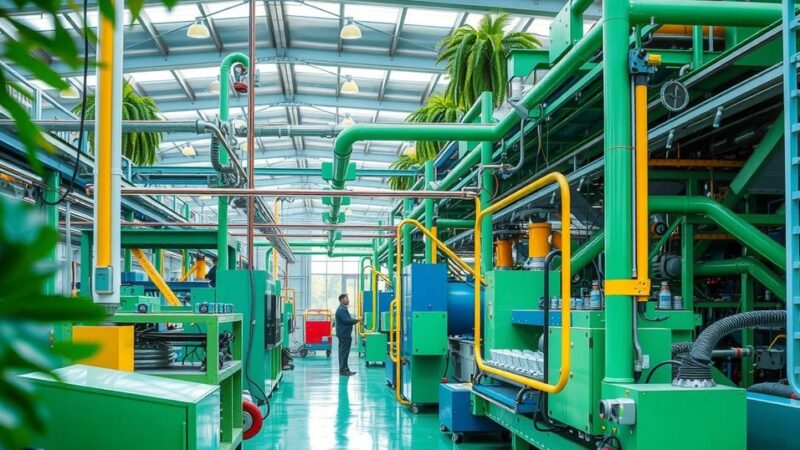Saudi Arabia is implementing new e-facilities in the Grand Mosque for Ramadan’s finale, including interactive screens and AI robots to assist a surge in worshippers. These technologies are designed to improve services and provide information in multiple languages, enhancing the pilgrim experience during this peak religious period.
In anticipation of increased worshipper attendance during the final ten days of Ramadan, Saudi Arabia is enhancing digital and robotic services at the Grand Mosque in Mecca. Abdulrahman Al Sudais, Chief of the Presidency for Religious Affairs of the Two Holy Mosques, announced the implementation of interactive screens and AI-equipped robots designed to assist millions of pilgrims. These initiatives aim to improve service efficiency and provide relevant religious information in multiple languages.
The recently introduced Manara Robot exemplifies this progression towards digital innovation. According to Al Sudais, it is a significant step in utilizing artificial intelligence to convey the messages of the Two Holy Mosques globally. Serving as an advanced resource, the robot effectively addresses visitor inquiries and delivers guidance in an engaging manner.
To enhance the worshipper experience during Ramadan, Saudi authorities are introducing various technological advancements, including smart apps and translation devices. These tools aim to enrich the pilgrimage experience, especially since the concluding days of Ramadan typically witness a surge in Umrah participants, both locally and internationally.
The concluded month of Ramadan, anticipated to end on March 29, marks a peak period marked by high attendance for Umrah rites, as devotees flock to the Grand Mosque for worship in large numbers, particularly in the final days of the holy month.
The introduction of interactive screens and robots in the Grand Mosque represents Saudi Arabia’s commitment to modernizing services for worshippers during Ramadan. With the Manara Robot leading this digital initiative, pilgrims will experience enhanced assistance in multiple languages, facilitating their religious practices and inquiries. As the expected influx of devotees approaches, these technological improvements are aimed at enriching the pilgrimage experience, particularly during the peak visiting period.
Original Source: gulfnews.com






